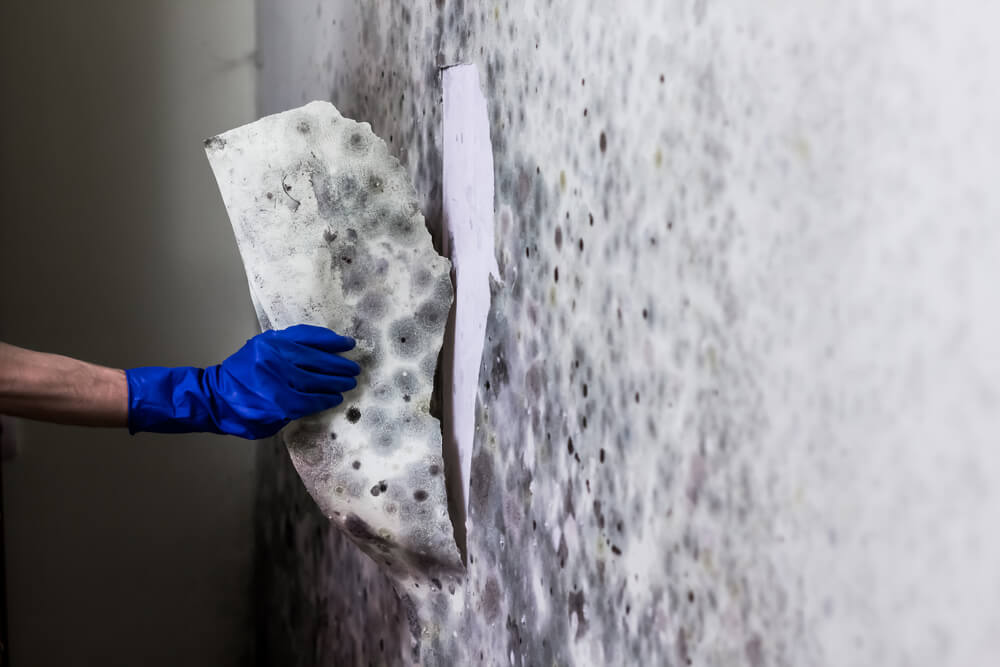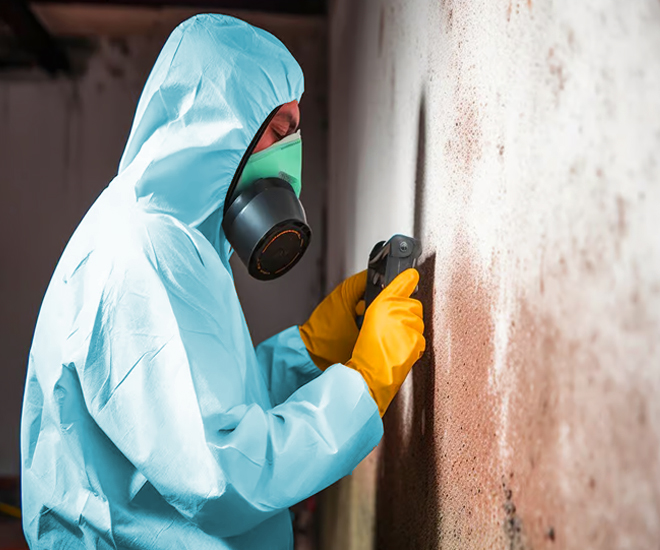Crafting a Thorough Post Mold Remediation Report
Crafting a Thorough Post Mold Remediation Report
Blog Article
Trick Tips for Successful Blog Post Mold And Mildew Remediation
Attending to mold problems in a reliable and timely way is essential for keeping a healthy interior setting. Effectively finishing mold and mildew removal is a multifaceted process that calls for interest to information and adherence to certain procedures. From inspecting dealt with areas to applying moisture control measures, each action plays a crucial duty in making sure the efficiency of the remediation procedure. Nonetheless, there are crucial post-remediation steps that are similarly vital but often overlooked. These actions not just verify the success of the removal initiatives however additionally add to avoiding future mold development.
Assessment of Treated Areas
Upon completion of the mold and mildew removal procedure, a thorough assessment of the dealt with locations is essential to make sure the effectiveness of the removal efforts. This inspection works as a vital action in the post-remediation stage to confirm that the mold and mildew removal and clean-up procedures achieved success in getting rid of the mold and mildew infestation and bring back a secure interior setting. The examination ought to be carried out by certified experts who have the know-how to analyze the remediated locations carefully.
These consist of visual evaluations to examine for any kind of indications of mold and mildew development or water damage, moisture levels to verify that the location is totally free and dry of excess humidity that can promote mold re-growth, and air high quality testing to make certain that the indoor air is safe to take a breath. Additionally, the assessment may involve utilizing specialized tools such as dampness meters and thermal imaging cams to spot surprise mold and mildew or moisture pockets that could lead to future mold and mildew problems if left unattended.

Dampness Control Steps
Reliable moisture control actions are vital for stopping mold growth and preserving a healthy indoor environment. Furthermore, utilizing dehumidifiers in moist areas can aid decrease humidity degrees, making it harder for mold and mildew to flourish.
Regularly keeping the structure and inspecting's exterior can likewise protect against moisture breach. After mold remediation. Making certain that rain gutters are clear, downspouts straight water away from the foundation, and the roof remains in great problem can help stop water from permeating into the structure. Properly securing doors and home windows can likewise assist keep wetness out
In cases where water damages occurs, timely activity is essential. Any type of leaks or spills must be cleansed and dried within 24-48 hours to stop mold and mildew growth. Utilizing dampness meters can aid spot hidden resources of water and ensure comprehensive drying. By executing these wetness control measures, the threat of mold returning can be substantially minimized, creating a much healthier indoor environment.
Appropriate Ventilation Evaluation
An important aspect of guaranteeing a healthy indoor setting article mold and mildew remediation is performing a detailed assessment of the air flow system. Post Mold Remediation. Correct air flow analysis plays a critical function in avoiding future mold development and maintaining air quality within the damaged room. During the assessment, specialists why not try these out assess the effectiveness of the air flow system, inspecting for any kind of blockages, leaks, or breakdowns that can prevent correct air flow. It is vital to ensure that the air flow system is properly sized for the room it offers and that it fulfills sector criteria for air exchange rates.
Furthermore, evaluating the air flow system includes taking a look at the circulation of air throughout the location to identify any kind of areas of bad circulation where dampness and pollutants could gather. Proper air flow not only assists in regulating humidity levels but also help in removing air-borne mold spores and various other pollutants, thereby improving general indoor air top quality. By dealing with any kind of ventilation problems post mold and mildew remediation, homeowner can develop a healthier and extra comfy environment for occupants while reducing the risk of mold and mildew re-infestation.
Cleaning and Disinfection Protocols
To ensure comprehensive mold remediation, careful adherence to particular cleansing and disinfection methods is critical. Cleansing and disinfection protocols play a crucial role in the post-mold removal stage to stop the recurrence of mold development and ensure a safe and healthy atmosphere.
After the preliminary cleansing, complete sanitation of the impacted locations is required to eliminate any staying mold and mildew spores and inhibit their spreading. This action is essential in protecting against the spread of mold to various other parts of the building. Furthermore, implementing preventative steps such as using mold preventions and keeping proper air flow can aid reduce the threat of future mold and Recommended Site mildew infestations. By following stringent cleaning and disinfection methods, homeowner can guarantee the effective removal of mold and mildew and create a healthy and balanced indoor setting for passengers.
Surveillance and Upkeep Plan
Implementing a regular monitoring and maintenance strategy is essential for making certain the long-lasting efficiency of mold and mildew removal initiatives. When mold remediation is completed, it is vital to develop a monitoring routine to assess the success of the remediation procedure. This involves regularly examining the formerly influenced areas for any kind of signs of mold reappearance or water damage. By performing routine checks, any type of brand-new mold development can be without delay identified and resolved, stopping a reoccurrence of the initial issue.
Additionally, establishing an upkeep strategy is essential to stopping future mold and mildew issues. Routine upkeep not just helps in avoiding mold and mildew yet also contributes to preserving a healthy and balanced interior environment - After mold remediation.
Conclusion
Finally, successful post mold and mildew removal includes complete examination of dealt with locations, application of moisture control measures, assessment of correct air flow, adherence to my company cleansing and disinfection protocols, and establishment of a monitoring and upkeep strategy. These crucial steps are vital to guarantee that mold development is properly removed and protected against from persisting in the future. By complying with these guidelines, residential property proprietors can maintain a secure and healthy and balanced atmosphere for occupants.
Upon conclusion of the mold removal process, a thorough examination of the treated locations is necessary to guarantee the effectiveness of the removal initiatives. These include aesthetic evaluations to examine for any type of signs of mold and mildew growth or water damages, wetness degrees to confirm that the location is dry and free of excess moisture that could advertise mold re-growth, and air top quality screening to guarantee that the interior air is safe to take a breath. Additionally, the examination might involve utilizing specialized devices such as moisture meters and thermal imaging electronic cameras to find hidden mold or dampness pockets that might lead to future mold and mildew issues if left uncontrolled. By dealing with any kind of ventilation concerns post mold and mildew removal, property owners can develop a healthier and a lot more comfortable environment for occupants while decreasing the threat of mold and mildew re-infestation.

Report this page